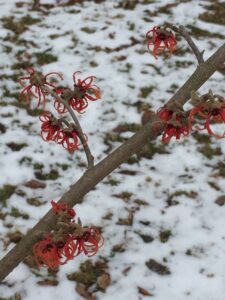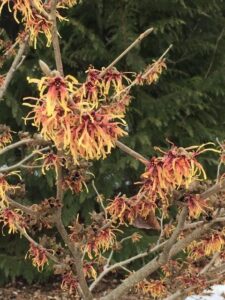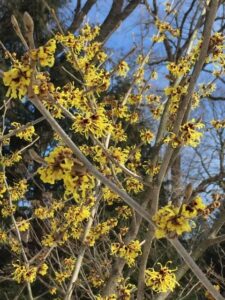Yes! If you visit the Columbus Park of Roses, walk over to the Witch Hazel collection on the north side of the Long Mall in the Formal Rose Garden, and you might agree!

From mid-February into March, these deciduous trees and shrubs, members of the Hamamelis genus, put on a dazzling display of fireworks-like blooms in bright, warm tones. On a warm day, you might
even catch a whiff of their wonderful citrus fragrance.
The Columbus Park of Roses has four different species of Hamamelis and a couple dozen cultivars:
Hamamelis vernalis — native to south and central U.S. and bloom January to April
Hamamelis virginiana — native to New England and Appalachia and blooms October to December
Hamamelis ovalis — native to southeast U.S. and blooms December through February
Hamamelis mollis — native to China and blooms January to March
Hamamelis x intermedia — a cross between Hamamelis mollis which is from China and H. japonica from Japan and are mostly fragrant, blooming from February to March

A number of characteristics make the genus Hamamelis and its various species and cultivars attractive additions to the garden. They tolerate a range of growing conditions and have brilliant foliage. Those from Asia bloom in the late winter and those native to the United States bloom in the late fall, collectively having unique long-lasting blooms anywhere between October and April, depending on species.

How did witch hazel get its name? It’s a derivation from old English “wice” or “wiche,” which means pliant or bendable. Early English settlers here found that the branches of the witch hazel could be used to divine for underground water, much like the hazel bush, Corylus, used back in England. Witch hazel in medicinal form has been used for centuries as an anti-inflammatory and astringent.
